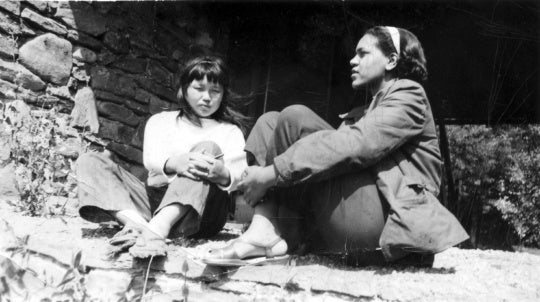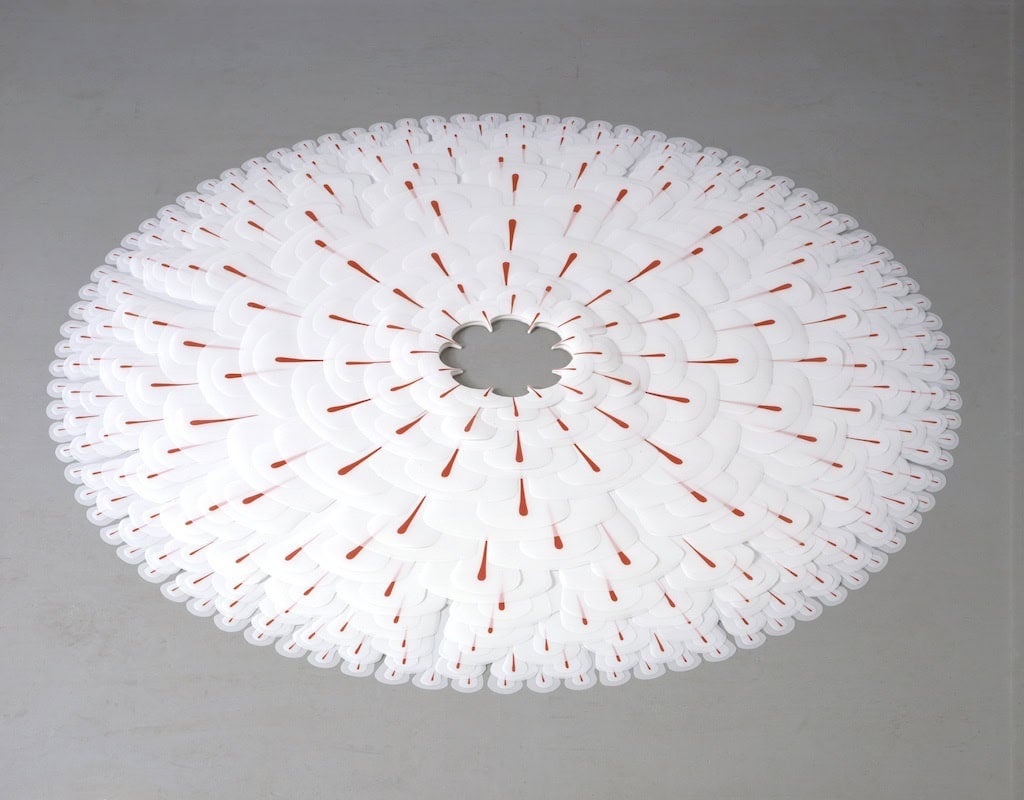
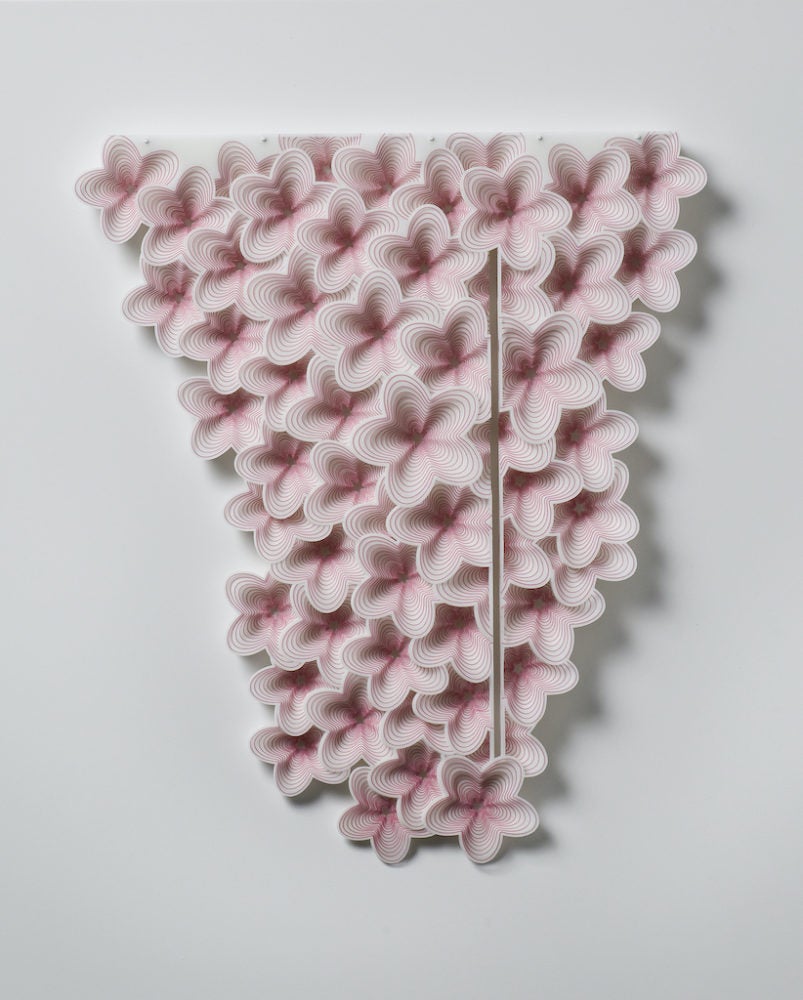
In an attempt to address the under-representation of female artists in American museums and esteemed private collections, Wilhelmina and Wallace Holladay took a revisionist approach to their own art collection. Committed to prioritizing artwork created by women, they founded the National Museum of Women in the Arts (NMWA) in 1981, inviting the formation of state-specific and International committees that would share and support their mission. The Georgia Committee for NMWA emerged in 1985 as one of the first such chapters.
At MOCA GA in Atlanta, Paper Routes – Georgia Women to Watch 2020 brings together work by five artists to represent the state of Georgia for consideration in the national survey exhibition of the same theme. Jerushia Graham, Sanaz Haghani, Imi Hwangbo, Lucha Rodriguez, and Whitney Stansell each expand upon the formal properties of paper as a medium. Guest curator Michael Rooks, the curator of contemporary art at the High Museum, alongside curatorial assistant Carson Keith, selected a wide range of artworks that speaks to the boundless possibilities of the material. In their curatorial statement, Rooks and Keith address a notion of “soft power” that holds true throughout the exhibition. Where paper works might often be perceived as overly precious or delicate, the variety of work presented demonstrates strength and versatility.
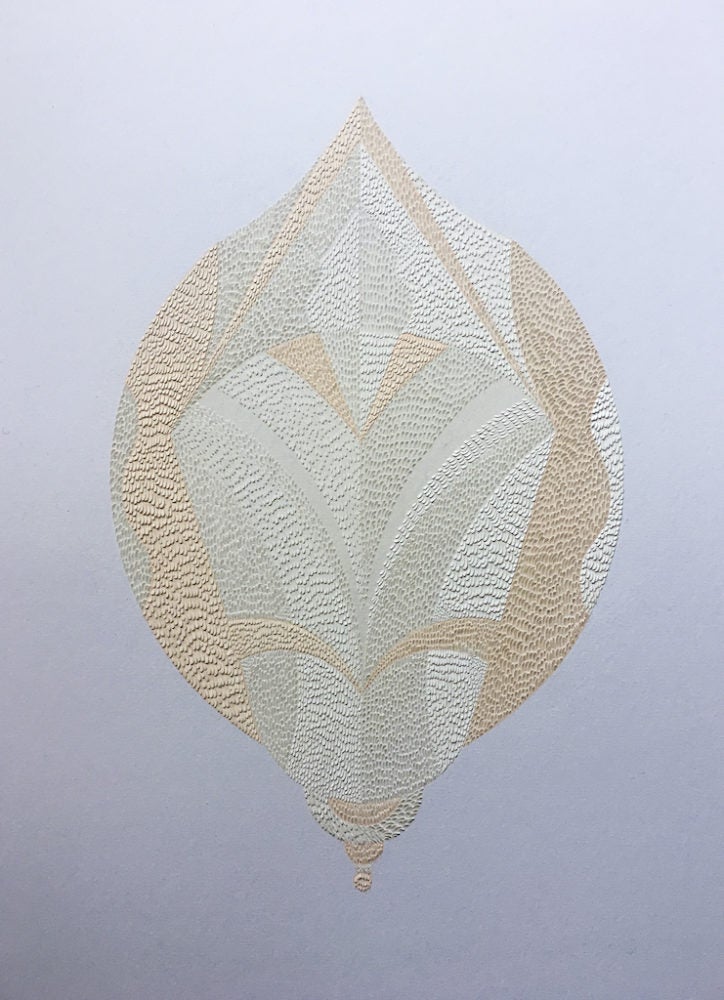
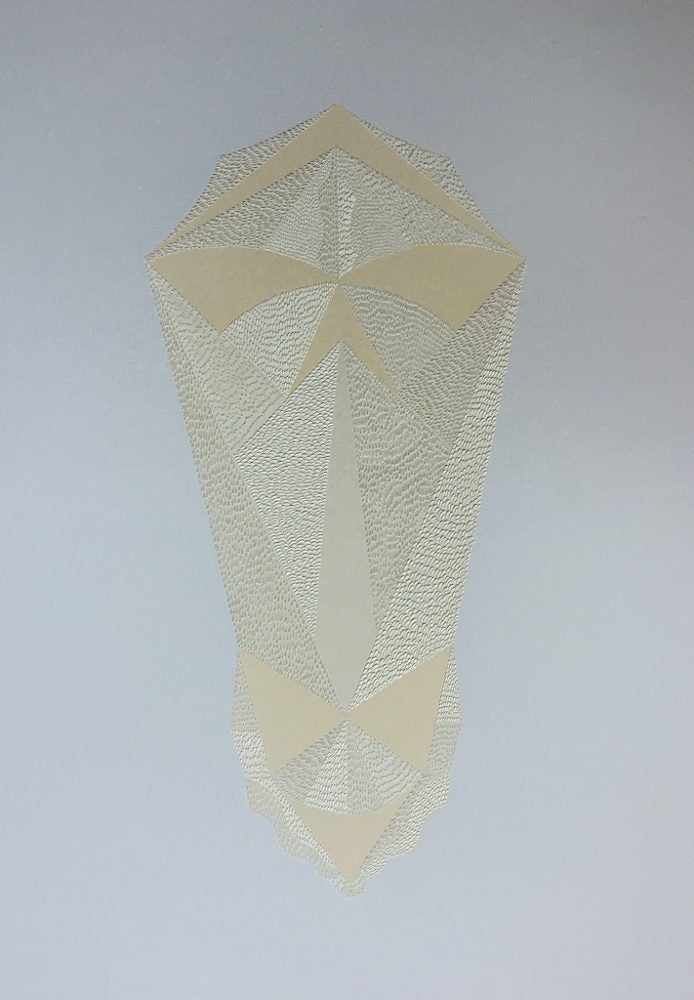
Inside the main gallery space at MOCA GA, Haghani suspends a large-scale installation, Forgotten Identity (2019-2020), that resembles an enlarged chador, confronting the issue of women’s rights in her native country of Iran. Similarly, Rodriguez creates staccato cut marks along the paper surface, borrowing from traditions of watercolor painting, to explore representations of gender in the Latinx community. Hwangbo exhibits three-dimensional works of cut mylar, detailed with floral patterns. Stansell displays an object from early animation technology—a zoetrope—alongside sculptural stitched paper. Graham’s high-contrast paper cuts are reminiscent of woodblock prints and appear deeply rooted in traditions of visual storytelling. Both Graham and Stansell intentionally depict male and female figures in their work as a way of showing a broader narrative of gendered forms. Altogether, the room is filled with paper-based objects that challenge this medium often being associated with femininity.
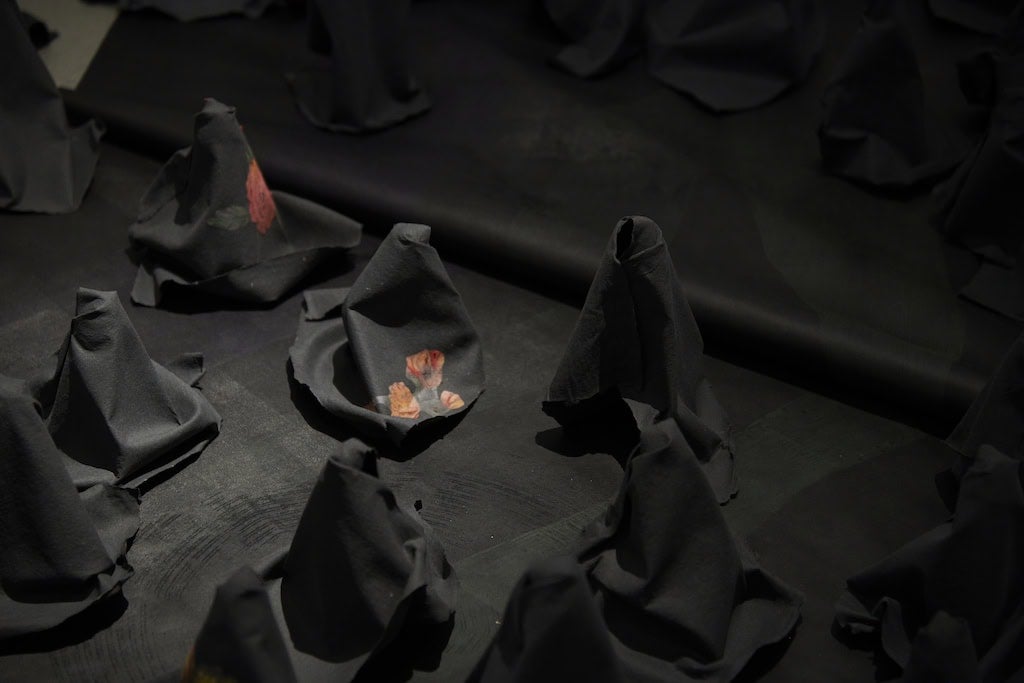
The individual works are each uniquely mesmerizing. Rich with detailed cuts and organic shapes and lines, the works build a more nuanced approach to assumptions of paper’s capabilities as a medium, and assumptions about gender and artistic achievement.
American women often face gender-based discrimination in the workplace. An unyielding wage gap, sexual harassment, a lack of supportive work-family policies, and limited opportunities for career advancement are all issues that disproportionately impact women. What, then, of a working, female artist? This exhibition promotes underrepresented or emerging artists in Georgia, upholding the GANMWA mission. The five women artists selected for Paper Routes – Georgia Women to Watch 2020 each have a distinct approach to art-making. As working visual artists, these women are attuned to expressing themselves through the creative process and challenge broader notions of what it means to negotiate space.
Paper Routes: Georgia Women to Watch is on view at MOCA GA through March 21, 2020.


